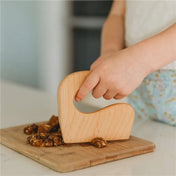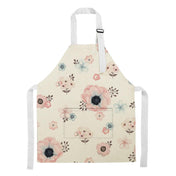The Importance of Gross Motor Skills and Activities for Toddlers
Little kids have a lot of growing up to do, both literally and figuratively. Their bones and muscles, for example, need hours upon hours of active play to grow up healthy and strong. It is through play, as well as various other gross motor skill activities, where children develop their muscles and learn how to use them to run, walk, jump, punch, kick, and so much more.
What are Gross Motor Skills for Kids?
Gross motor skills can be classified as anything that involves whole body movement, especially the larger muscles of the body in order to perform day-to-day functions. This includes, among others, standing and walking, as well as running, jumping, and in children, their penchant for occasionally putting themselves in danger and sitting on the edge of the dinner table!
Gross motor skills also include eye-hand coordination skills. This includes throwing, catching, kicking, riding bicycles, swimming, and more.
How to Enhance a Child’s Gross Motor Skills?
The fact is, infants don’t need much help as far as displaying gross motor skills go. They will, on their own, try to hold their head up, roll back and forth, as well as sit up without any support. They’ll even try to crawl, stand, and walk if left to their own devices. However, it’s still extremely important for parents to find ways to encourage and enhance the gross motor skills of their little ones, starting from infancy.
In the first six months of life, much of the physical activity involving babies is limited to the floor. This includes kicking and waving their hands, as well as rolling from their stomach to their back.
During this time, you’ll want to limit your activities with your child to a couple of minutes and keep it as simple as teaching your baby how to grasp objects by letting them take something out of your hand. You can also try being creative and create an obstacle course out of light and soft materials. This way, you’re engaging your child’s gross motor skills and curiosity while also keeping them as safe as possible.
From around 9-14 months, your baby’s activity levels will begin to rapidly increase and their movements will become more complex.
This is the time when they’ll go from crawling and standing to climbing and moving through more space than you could possibly imagine. But this is what also makes this period so important. The hundreds of patterns of movements that they’ll try, practice and explore, can and will affect how well they can manipulate objects later on in life, especially when they start their schooling years.
Children who are encouraged to practice and develop their gross motor skills early in life won’t have any trouble holding pens and pencils, or using utensils to eat, as well as handling objects like balls in ball games and other sports.
Different Activities to Develop Gross Motor Skills for Kids
Indoor Gross Motor Activities
There are many ways to develop gross motor skills in your children and many of them don’t have to be outdoors or even have to take up a lot of room. A small space on the lounge or playroom floor is enough. With the right resources and activities, you will be surprised as to how little room children really need, in order to play happily.
Indoor skill-building activities to try include:
- Dancing: It doesn’t even have to have choreography. Of course, it’s nice to start with popular songs with movements, like “Heads, Shoulders, Knees, and Toes” and “I’m a Little Teapot.” But after this, you can freestyle. What’s important is that it involves lots and lots of motion.
-
Pretend play: What’s a good way to hit two birds with one stone? Pretend play! If you want to cultivate your child’s imagination and creativity, while also boosting their motor skills, you can have them use their bodies and pretend as if they were planes, robots, ducks, or whatever it is that they can think of.
- Let your child push or pull shopping baskets: You might not think that your child can do it, but letting your child push and pull the shopping trolley (with your guidance) when you’re out shopping or getting groceries is a great way to develop their gross motor skills.
- Building forts and obstacle courses: Using pillows, boxes, and blankets, you and your child can build forts and obstacle courses. The best part? You don’t even have to leave the room.
- Arts and crafts activities: Building and construction games, as well as using bricks and blocks, can stimulate your child’s creativity and motor skills.
- Movement classes: Ballet and martial arts classes for toddlers, can be a fun way to give your child an opportunity to develop their gross motor skills. The only problem is that they can get expensive. If you can’t afford them, that’s okay. But if you can, all the better. Either way, what’s important is that you give your little ones a chance to just literally move their bodies.
Outdoor Gross Motor Activities
As much fun as kids can have indoors, the outdoors is also a great place where your child can engage and develop their muscles.
Examples of simple outdoor activities that children can enjoy include:
- Walking: Yes. Just plain old walking. It can be right down the neighbourhood streets to their favourite babychino cafe, or to their favourite park. To liven things up a little, you can try to add variety by adding marching, skipping, or hopping. Or, it can just be plain walking as you tell your child stories, or as the two of you play games like identifying the colours and objects that you see while walking.
- The playground: There remains no better place for children to develop their gross motor skills and socialise at the same time, than the good old neighbourhood park. Just try to sanitise your child's hands before and after playing in the playground to be safe.
- Swimming: What child doesn’t like to swim? A fun couple of hours running and frolicking in the waves or the local pool can be a fabulous way to develop your child’s gross motor skills.
- Playing with balls: Whether it’s throwing tennis balls and playing catch, or kicking footballs, or shooting a basketball through a toddler-sized hoop, playing with different sized balls can be a really enjoyable and easy way to develop your child's gross motor skills together.
-
Balance is the ability to maintain a controlled body position during task performance, whether it is sitting at a table, riding a Balance Bike or stepping up onto a kerb. Age appropriate balance and coordination allows your little ones to be involved in sports with a reasonable degree of success as it aids fluid body movement for physical skill performance
What’s the Difference Between Fine Motor Skills and Gross Motor Skills?
In a nutshell, gross motor skills encompass the larger movements of the body such as walking, running, sitting and rolling over. Fine motor skills however, involve smaller movements and typically engage smaller muscle groups such as those found on the fingers, toes, lips, tongue, and wrists.
Examples of fine motor skills include holding small items, buttoning their clothes, turning pages, eating using utensils, cutting with scissors, and writing.
Why Is It Important to Start Young?
Working on children’s gross motor skills while they are still young helps them to develop the necessary strength in their bodies, bones and muscles. As they grow up, this makes them more confident when using their bodies in sports and day to day activities. It puts them on a path to trying out more complex activities such as playing basketball or soccer, among other things.
Given that sensory and motor experiences make up for most of your child’s first years of life, the more chances your child has to develop these skills, the better equipped they will be as grow older. This is especially important in today’s society where young children for example, have become extremely prone to childhood obesity. By encouraging the development of your child’s gross motor skills, you help instil within them an innate love for movement and exercise.
Give Children Time to Work Their Muscles
It doesn’t matter if your child is an infant, a toddler, or a preschooler, all children deserve the opportunity to work both their bigger and smaller muscles. This is because they all work together to help children the necessary confidence in their bodies that they need to succeed.
Keep your child moving all day long with My Happy Helpers’ range of gross motor toys. Designed to activate core muscles and allow children to move freely, our variety of wooden gross motor toys are extremely beneficial to the early stages of your child’s life.




